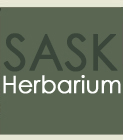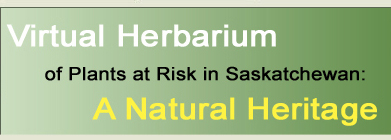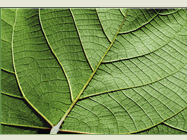|
| Potamogeton strictifolius
Oakes |
|
| |
| TAXONOMY |
| |
| Family: |
Potamogetonaceae |
| Genus: |
Potamogeton |
| |
| Species Synonyms: |
Potamogeton longiligulatus Fern.
Potamogeton pusillus var. rutiloides (Fern.) Boivin
Potamogeton rutilus auct. non Wolfgang
Potamogeton strictifolius
var. rutiloides Fern.
Potamogeton strictifolius var.
typicus Fern. |
| Common Names: |
narrowleaf pondweed
straight-leaved pondweed |
| |
| DISTRIBUTION |
| |
| Canada: |
east-central Yukon, south to central Alberta,
south-central Saskatchewan, Manitoba – Ontario – Quebec |
| Saskatchewan: |
southern to central Saskatchewan; Cypress Hills
– Cabri Lake – Regina – Saskatoon – Candle Lake |
| Ecoregion: |
Cypress Upland, Mixed Grassland, Moist Mixed Grassland,
Boreal Transition, Mid-Boreal Upland |
| |
| HABITAT |
| |
| Saskatchewan: |
in shallow water of protected lake bays, ponds,
and slow streams |
| Associated Species: |
hardstem bulrush |
| |
| RARITY STATUS |
| |
Provincial
Status According
to Harms (2003): |
Threatened |
| Nature Conservancy
Status: |
G5 S2 |
Saskatchewan
Species at
Risk Status: |
None |
| COSEWIC Status:
|
None |
| |
| Narrowleaf pondweed
is threatened because it is rare or uncommon in Saskatchewan. No immediate
threats are known but may occur in the future. |
| |
| SPECIES
DESCRIPTION |
| |
| Height: |
25 – 90 cm |
| Roots: |
roots fibrous; rhizomes absent |
| Stems: |
round, slender, lacking spots, glands at nodes
(if present) greenish to brown or gold; overwintering stems terminal or
lateral, common |
| Leaves: |
submersed, spirally arranged, rigid, sessile,
1.2 – 6.5 cm long, 0.6 – 2 mm wide, linear, base not lobed or
clasping, tip tapered, air spaces absent, veins 3 – 5, green, margin
entire; stipules disintegrating, fused, free from blade, white, fibrous,
shredding at tip |
| Inflorescence: |
spikes uniform, 6 – 13 mm long, emersed,
slender; inflorescence stalks uniform, terminal, 1 – 4.5 cm, erect |
| Flowers: |
small, green; tepals 4; stamens 4; carpels 4 |
| Fruits: |
sessile, 2 – 3 mm long, green-brown, not
boat-shaped |
| |
| POTAMOGETON
KEY FOR SPECIES FOUND IN SASKATCHEWAN |
| |
| 1 Stipular sheaths of submersed leaves
fused to base of leaf blade; leaf margins cartilaginous |
P. robbinsii |
| 1 Stipular sheaths of submersed leaves
free from base of leaf blade; leaf margins not cartilaginous |
2 |
| |
|
2 Submersed leaves oblong to lance-shaped
to nearly round
|
3 |
| 2 Submersed leaves ribbon-like or
thread-like |
9 |
| |
|
| 3 Leaf margins conspicuously saw-toothed
and wavy; overwintering stems present |
P. crispus |
| 3 Leaf margins entire or wavy; overwintering
stems absent |
4 |
| |
|
| 4 Submersed leaves clasping; floating
leaves absent |
5 |
| 4 Submersed leaves not clasping, may
be stalked; floating leaves present or absent |
6 |
| |
|
| 5 Stipules persistent; rhizome with
rusty spots |
P. praelongus |
| 5 Stipules shredding into fibres;
rhizome not obviously spotted |
P. richardsonii |
| |
|
| 6 Floating leaf blade rounded to heart-shaped;
stem rusty or black-spotted; submersed leaves arced |
P. amplifolius |
| 6 Floating leaf blade wedge-shaped
or rounded; stems without spots; submersed leaves not arced |
7 |
| |
|
| 7 Submersed leaves stalked |
P. nodosus |
| 7 Submersed leaves sessile |
8 |
| |
|
| 8 Fruits plump, stalked; submersed
leaf blade 7 – 9-veined |
P. alpinus |
| 8 Fruits compressed, not stalked;
submersed leaf blade 3 – 19-veined |
P. gramineus |
| |
|
| 9 Floating leaves present on at least
come plants in a population |
|
| 9 Floating leaves absent |
|
| |
|
| 10 Air spaces in leaf tissue present
and prominent; submersed leaves with distinction between blade and stalk;
leaves of two types, the floating ones long-stalked and wider than the submersed
ones |
P. epihydrus |
| 10 Air spaces in leaf tissue absent
or not prominent; blade and petiole not well-differentiated on submersed
leaves; leaves uniform, no distinction between the floating and submersed
leaves |
P. natans |
| |
|
| 11 Nodes without glands |
12 |
| 11 Nodes glandular |
13 |
| |
|
| 12 Leaves 15 – 35-veined, greater
than 2 mm wide; stem wing-flattened |
P. zosteriformis |
| 12 Leaves 3 – 5-veined, less
than 2 mm wide; stem not wing-flattened |
P. foliosus ssp. foliosus |
| |
|
| 13 Stipules fibrous, whitish |
14 |
| 13 Stipules not fibrous, green, brown
or whitish |
15 |
| |
|
| 14 Leaf tip tapered to pointed, leaves
thin, 5 -7-nerved; inflorescence stalks at most 5 cm long |
P. friesii |
| 14 Leaf tip bristle-tipped; leaves
firm, 3-nerved; inflorescence stalks to 9 cm long |
P. strictifolius |
| |
|
| 15 Fruits 2.5 – 3.5 mm long |
P. obtusifolius |
| 15 Fruits 1.5 – 2 mm long |
16 |
| |
|
| 16 Mature fruits widest at the top;
inflorescence stalks 1 – 3 per plant; leaf blade with less than 2
rows of air spaces along midrib |
P. pusillus ssp. pusillus |
| 16 Mature fruits widest at the middle;
inflorescence stalks more than 3 per plant; leaf blade with 1 – 5
rows of air spaces along midrib |
P. pusillus ssp. tenuissimus |
|






